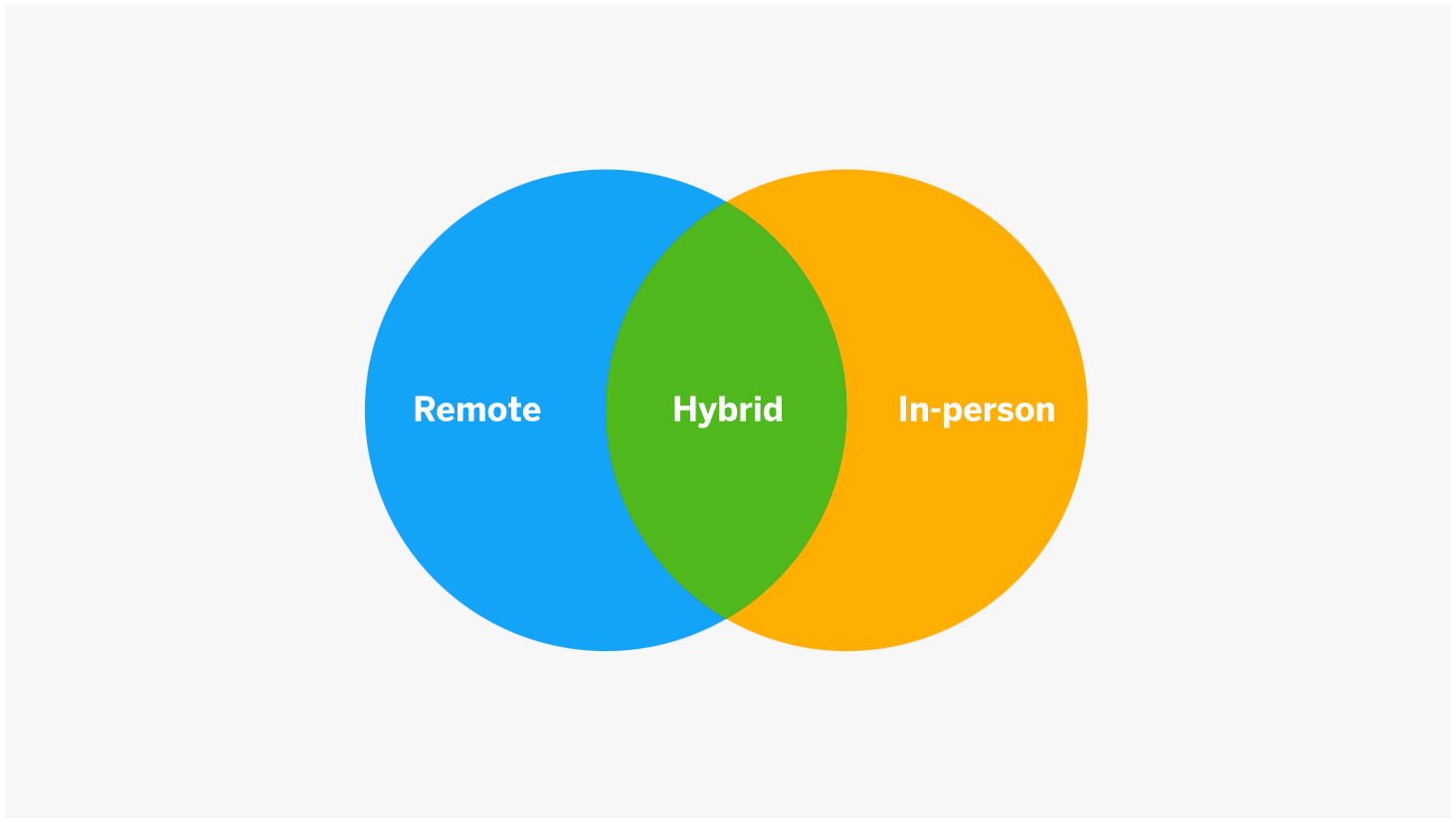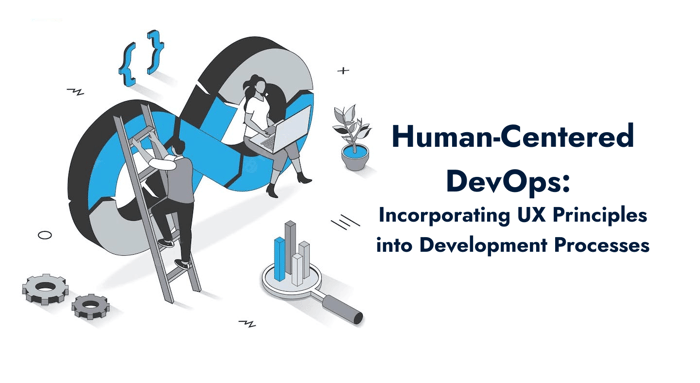Learn how to leverage Agile methodology in hybrid work environments
Agile methodology, a cornerstone of modern software development, emphasizes short development cycles, frequent iteration, and close collaboration to swiftly meet evolving market demands. Rooted in the Agile Manifesto, created in 2001 in Snowbird, Utah, Agile promotes principles such as individuals and interactions over processes and tools, and customer collaboration over contract negotiation.
Hybrid work environments, which combine remote and in-office work, present unique challenges for Agile teams. One of Agile's core tenets is the effectiveness of face-to-face communication within development teams, which is increasingly difficult to maintain in a hybrid or fully remote setting. The transition to these environments requires new strategies for effective communication and collaboration, testing the resilience of Agile practices.
The purpose of this blog is to provide guidance on mastering Agile in hybrid work environments. By addressing the challenges and offering practical solutions, we aim to help teams adapt and thrive in this new landscape, ensuring the continued success of Agile methodologies amidst the evolving dynamics of the workplace.
Understanding Hybrid Work and Agile
A hybrid workplace model blends in-office and remote work, offering flexibility and support to employees. In this setup, employees enjoy more autonomy and a better work-life balance, increasing engagement and productivity. Employers benefit from building a healthier, more stable workforce. However, implementing a hybrid workplace strategically is crucial, leveraging modern HR technologies to foster connection, collaboration, and employee engagement.
Hybrid work models can vary, but they generally allow employees to choose their work location and hours based on their needs and the tasks at hand. These models are particularly suitable for computer-based work that doesn't require a physical presence in the office. According to McKinsey, about 20% to 25% of the workforce in advanced economies could work from home between three and five days a week without losing productivity, a significant increase compared to pre-pandemic levels.
Overview of Agile Principles and Practices
Agile methodology is a project management framework that emphasizes flexibility, continuous improvement, and customer satisfaction. Key principles include:
- Individuals and interactions over processes and tools: Emphasizing human communication and collaboration.
- Working software over comprehensive documentation: Focusing on delivering functional products.
- Customer collaboration over contract negotiation: Involving customers in the development process for better outcomes.
- Responding to change over following a plan: Adapting to changes quickly to meet market demands.
Agile practices involve short development cycles (sprints), frequent iterations, and continuous feedback, enabling teams to deliver high-quality products efficiently.
Alignment Between Agile Values and the Needs of Hybrid Teams
Agile values align well with the needs of hybrid teams, though they require some adaptation. The flexibility inherent in Agile can support the dynamic nature of hybrid work models. For instance, the emphasis on individuals and interactions can be maintained through digital collaboration tools, ensuring effective communication despite physical distances. Agile’s principles of collaboration and continuous improvement are particularly beneficial in hybrid settings, where team members are dispersed but still need to work cohesively.
However, one of Agile’s core tenets is face-to-face conversation as the most efficient and effective method of conveying information. Hybrid environments challenge this principle, necessitating robust digital communication strategies to replicate the benefits of in-person interactions. Agile teams in hybrid settings must focus on utilizing advanced collaboration tools to ensure seamless communication and information sharing. Tools such as Zoom, Microsoft Teams, and Slack can facilitate real-time communication, while project management platforms like Jira and Trello help track progress and maintain transparency.
Maintaining flexibility is another critical aspect of aligning Agile values with hybrid team needs. Hybrid work models demand an adaptable approach to individual work preferences and schedules. Agile teams should be open to varying work hours and locations, allowing team members to work when and where they are most productive. This flexibility not only enhances job satisfaction but also leverages the diverse strengths of team members, contributing to overall team success.
Fostering a strong team culture is essential for hybrid Agile teams. Building trust and engagement despite physical separation requires intentional efforts to create a cohesive team environment. Regular virtual team-building activities, social interactions, and inclusive practices can help bridge the gap between remote and in-office team members. Encouraging open communication, active participation, and mutual support fosters a sense of belonging and collaboration.
By aligning Agile principles with the characteristics of hybrid work models, teams can navigate the challenges of hybrid environments while maintaining productivity and collaboration. The adaptability of Agile values makes them well-suited to support the evolving needs of hybrid teams, ensuring that they remain effective, engaged, and aligned with their goals.
Synchronous and Asynchronous Communication Strategies
In today’s diverse communication landscape, mastering both synchronous and asynchronous communication methods is crucial for Agile teams working in hybrid environments. Each type offers unique advantages and is suited to different situations.
Synchronous communication happens in real-time, with all participants engaging simultaneously. Common examples include:
- Video calls (Zoom, Google Meet): These enable face-to-face interaction, fostering team rapport and immediate problem-solving.
- Instant messaging (Slack, Microsoft Teams): These platforms facilitate quick exchanges and real-time collaboration.
- Phone calls and in-person meetings: These allow for spontaneous and dynamic discussions.
Advantages of Synchronous Communication
- Immediate Interaction: Synchronous communication is ideal for urgent issues and rapid decision-making, as participants can discuss and resolve matters in real time.
- Enhanced Team Rapport: Real-time interactions help build stronger relationships and creative synergy among team members, fostering a sense of connection.
- Increased Efficiency: Quick exchanges reduce delays, speeding up task completion and ensuring that issues are addressed promptly.
Disadvantages of Synchronous Communication
- Scheduling Conflicts: Aligning schedules for real-time communication can be challenging, especially for teams spread across different time zones.
- Pressure to Respond Immediately: Participants may feel pressured to respond quickly, which can limit the time available for thoughtful and considered responses.
- Potential for Interruptions: Real-time interactions can disrupt focused work, leading to decreased productivity and fragmented attention.
Asynchronous communication does not require all participants to engage simultaneously. Examples include:
- Emails: Allow for detailed, long-form communication that can be read and responded to at the recipient's convenience.
- Project management tools (Jira, Trello): Enable teams to update and track progress without needing immediate responses.
- Collaborative documents (Google Docs, Confluence): Allow multiple team members to contribute and review content over time.
Advantages of Asynchronous Communication
- Flexibility: Team members can communicate and collaborate at their own pace, accommodating different time zones and personal schedules.
- Thoughtful Responses: Participants have more time to consider and craft their responses, leading to more thorough and well-thought-out communication.
- Reduced Interruptions: Asynchronous communication minimizes disruptions, allowing team members to maintain focus on their tasks.
Disadvantages of Asynchronous Communication
- Delayed Responses: The lack of real-time interaction can lead to slower decision-making and longer wait times for feedback.
- Miscommunication Risks: Without immediate clarification, there is a higher potential for misunderstandings or misinterpretations.
- Less Immediate Rapport Building: The absence of real-time interaction can make it harder to build and maintain strong personal connections among team members.
By effectively balancing synchronous and asynchronous communication strategies, Agile teams in hybrid environments can leverage the strengths of both methods. This balance allows teams to stay connected, collaborate efficiently, and maintain productivity while accommodating the diverse needs and schedules of their members.
Tools and Technologies for Collaboration and Project Management
Effective hybrid work relies heavily on the right tools and technologies. Here are key categories and examples of tools that support Agile practices in hybrid environments:
Adapting Agile practices for hybrid work environments involves leveraging both synchronous and asynchronous communication methods effectively. Utilizing the right tools and technologies is crucial for maintaining productivity, collaboration, and team cohesion in a hybrid setting. By strategically balancing these approaches, Agile teams can continue to thrive and deliver high-quality projects in today’s evolving work landscape.
Managing Time Zones and Distributed Teams
Managing teams spread across various time zones requires thoughtful coordination to ensure seamless collaboration and productivity. One effective strategy is to utilize a shared calendar. Implementing tools like Google Calendar or Microsoft Outlook helps manage schedules by encouraging team members to share their working hours and availability. By scheduling meetings during overlapping hours of all time zones, teams can maximize participation and ensure everyone is included in crucial discussions.
Adopting a follow-the-sun model can significantly enhance the workflow of distributed teams. This approach involves distributing tasks based on time zones to maintain a continuous workflow. Ensuring proper handovers at the end of each workday allows projects to keep moving forward without unnecessary delays. This model leverages the global presence of the team, making use of different time zones to work around the clock efficiently.
Implementing time zone converters is another practical strategy to simplify scheduling across different time zones. Tools like World Time Buddy or Every Time Zone can be integrated into project management systems for easy access, helping team members coordinate their schedules more effectively. These tools provide a visual representation of time zone differences, making it easier to find suitable meeting times for all participants.
Comprehensive documentation is essential in managing distributed teams. Maintaining detailed records of project progress, meeting notes, and decisions ensures that all team members are informed and aligned, regardless of their time zone. Utilizing tools like Confluence or Notion for a centralized repository of information allows for easy access and reference, fostering transparency and clarity within the team.
By implementing these strategies, teams spread across various time zones can enhance their collaboration and productivity, ensuring smooth and efficient operations despite geographical differences.
Balancing Autonomy and Alignment in Distributed Agile Teams
Balancing the autonomy of team members with the alignment of team goals is crucial for the success of distributed Agile teams. Achieving this balance begins with setting clear goals and objectives. Defining and communicating precise goals, milestones, and expectations ensures that everyone is on the same page. Using frameworks like OKRs (Objectives and Key Results) can help align individual contributions with overarching team objectives, fostering a shared sense of purpose and direction.
Empowering team members is essential for promoting autonomy within the team. Granting autonomy allows team members to make decisions within their scope, which encourages a sense of ownership over tasks and projects. This empowerment not only boosts morale but also drives innovation and efficiency as team members feel trusted and valued.
Regular check-ins are vital for maintaining alignment while respecting autonomy. Scheduling consistent check-ins and one-on-one meetings provides opportunities to ensure alignment, address any issues, and offer feedback and support. These sessions help keep the team focused on common goals while allowing for individual flexibility and growth.
Effective use of Agile activities can further balance autonomy and alignment. Conducting regular Agile activities such as sprint planning, reviews, and retrospectives ensures that the team stays on track and continuously improves. It's important to make these ceremonies inclusive, accommodating different time zones to ensure participation from all team members.
Utilizing collaboration tools is another key strategy. Project management tools like Jira, Trello, or Asana can track progress and maintain transparency, allowing team members to stay informed and aligned. Communication tools like Slack or Microsoft Teams foster continuous engagement and facilitate real-time collaboration, bridging the gap between distributed team members.
Cultivating a strong team culture is essential for balancing autonomy and alignment. Fostering a culture of trust and collaboration through team-building activities and informal interactions helps strengthen relationships within the team. Encouraging social interactions and virtual team-building exercises can enhance team cohesion, making it easier to navigate the complexities of a distributed Agile environment.
By implementing these strategies and leveraging the right tools, Agile teams can effectively balance autonomy and alignment, overcoming the challenges of time zone differences and maintaining high levels of productivity and collaboration.
Overcoming Challenges and Roadblocks
Communication barriers and misalignment are common challenges in hybrid and distributed Agile teams. To effectively overcome these challenges, it is crucial to establish clear and standardized communication protocols. This involves setting explicit guidelines for how and when to communicate, including the preferred tools and expected response times. Utilizing a combination of synchronous communication methods, such as video calls and chats, along with asynchronous methods like email and project management tools, can help ensure that all team members are on the same page.
Promoting clarity and transparency within the team is another essential strategy. Ensuring that all team members have access to the same information through shared documents and centralized platforms, such as Confluence or Notion, can prevent misalignment. Thorough documentation of meeting notes, decisions, and action items is vital, and these should be shared with the entire team to keep everyone informed and aligned with the project's goals.
Regular sync meetings play a critical role in maintaining team alignment. Scheduling regular meetings, including daily stand-ups, sprint reviews, and retrospectives, allows the team to discuss progress, address any issues, and plan the next steps. These meetings provide a structured forum for team members to stay connected and aligned, facilitating better collaboration and problem-solving.
Feedback loops are also important in overcoming communication challenges. Encouraging continuous feedback and keeping open communication channels can significantly improve team dynamics. Using tools like Slack or Microsoft Teams for quick updates and clarifications can help address issues promptly, ensuring that the team remains cohesive and productive. Through these strategies, hybrid and distributed Agile teams can effectively navigate and overcome communication barriers and misalignment.
Mitigating the Risk of Burnout and Isolation in Remote Team Members
Remote work can lead to feelings of isolation and burnout if not managed properly. To mitigate these risks, fostering social connections among team members is crucial. Scheduling regular virtual social events, such as coffee chats, game sessions, or team-building activities, can help remote employees feel more connected to their colleagues. Additionally, creating informal communication channels for non-work-related discussions allows team members to engage in casual conversations, building a sense of camaraderie and community.
Encouraging work-life balance is another important strategy to prevent burnout. Promoting flexible working hours enables team members to manage their personal commitments effectively, reducing stress and enhancing overall well-being. It is also essential to encourage regular breaks and time off to ensure employees can recharge and avoid burnout. Emphasizing the importance of taking breaks and vacations can help maintain a healthy work-life balance.
Monitoring workload and well-being is vital in identifying and addressing potential burnout risks. Utilizing project management tools to track workloads can help managers identify when team members are overwhelmed. Conducting regular check-ins to discuss well-being and offer support can provide employees with the necessary resources and assistance to manage their stress levels effectively.
Providing resources for mental health is another key component in mitigating burnout and isolation. Offering access to mental health resources, such as counseling services or wellness programs, demonstrates a commitment to employee well-being. Encouraging team members to take advantage of these resources when needed can help them cope with the challenges of remote work and maintain their mental health. By implementing these strategies, organizations can create a supportive and healthy remote work environment that minimizes the risk of burnout and isolation.
Strategies for Resolving Conflicts and Maintaining Team Cohesion
Conflicts are inevitable in any team, but they can be more challenging to resolve in a hybrid or remote setting. To address conflicts and maintain team cohesion, it is essential to establish clear conflict resolution processes. Defining explicit procedures for addressing and resolving conflicts provides a structured approach for team members to follow when issues arise. Encouraging open and respectful communication during conflicts helps ensure that all parties feel heard and understood, facilitating a more effective resolution process.
Promoting psychological safety within the team is crucial for resolving conflicts. Creating an environment where team members feel safe to express their opinions and concerns without fear of retribution fosters a culture of trust and openness. Encouraging active listening and empathy during discussions helps team members understand each other's perspectives, reducing misunderstandings and fostering a collaborative atmosphere.
Mediation and facilitation can be valuable tools in conflict resolution. Utilizing neutral third parties, such as HR representatives or team leads, to mediate conflicts can provide an unbiased perspective and help guide the discussion toward a resolution. Facilitating discussions to reach a mutually agreeable solution ensures that all parties are involved in the process and that the resolution is fair and acceptable to everyone.
Regular team-building activities play a significant role in maintaining team cohesion. Organizing activities that promote trust and collaboration, such as workshops, retreats, or virtual team-building exercises, helps strengthen interpersonal relationships among team members. Encouraging team members to get to know each other on a personal level builds camaraderie and a sense of community, which can make resolving conflicts easier.
Conclusion
Mastering Agile in hybrid work environments involves blending Agile principles with the needs of remote and distributed teams. This setup, aligned with Agile methodology, helps teams remain productive and cohesive despite geographical and time zone differences. Adapting Agile practices for hybrid work involves balancing communication, using tools for project management, and strategic coordination. Overcoming challenges, promoting transparency, and fostering social connections are essential for maintaining a high-performing team. Embracing Agile's flexibility and iterative nature helps navigate the complexities of hybrid work.
To further enhance your understanding and implementation of Agile in hybrid work environments, explore additional resources and seek expert consultation.
Akava would love to help your organization adapt, evolve and innovate your modernization initiatives. If you’re looking to discuss, strategize or implement any of these processes, reach out to [email protected] and reference this post.






